Way-too-early 2023 MLB Mock Draft
The Major League Baseball Draft is still seven months away and bonus pools aren’t even set yet but an increase is expected to occur. The Pittsburgh Pirates landed the first pick via the inaugural draft lottery system taking place. The club had a 16.5 percent chance at landing the top selection.
The Oakland Athletics came into the process with identical odds at picking first but that organization fell to the No. 6 in the order. The Minnesota Twins jumped into the top five from the 13th position and the bonus pool gain alone is a significant boon for the franchise.
The White Sox possessed the 26th overall pick in the 2022 draft and the bonus pool allowed them to spend around $6.5 million. The franchise should have well over $8 million to spend this year with half of the total earmarked for the 15th overall pick. Here at Sox Machine we wrote about the top hitters and pitchers in next year’s class.
This will be Mike Shirley’s fourth draft in the big chair. Is he a total wild card, or are trends starting to form? In his first three attempts, he’s chosen from different demographics with Garrett Crochet (college pitcher), Colson Montgomery (prep hitter) and Noah Schultz (prep pitcher). Could the White Sox just decide to take a college bat this time and round out the foursome?
Here’s a way-too-early look at the first round.
1. Pittsburgh Pirates: Dylan Crews, OF, LSU
Crews projects as a middle-of-the-order force with a corner outfield profile possessing plus power and defense. He fits the window in Pittsburgh and is the early favorite for this spot.
2. Washington Nationals: Max Clark, OF, Franklin HS (IN)
Clark is a dynamic five-tool talent from the Indianapolis area who should stay in center field. Possessing elite speed and a plus hit tool, he has franchise=changing potential. The Nationals could take the big conference college starting pitcher but they go for upside here.
3. Detroit Tigers: Jacob Gonzalez, SS, Ole Miss
Scott Harris decides to go with a college bat to begin his tenure as the lead decision maker in Detroit. Gonzalez makes lots of contact with plus exit velocities and budding power.
4. Texas Rangers: Chase Dollander, RHP, Tennessee
Dollander profiles as a front-of-the-rotation starter and still has some projection left. There’s high-90’s heat here with an excellent slider and he should be the best pitcher in the country this year. Chris Young hasn’t been shy about taking college pitching recently.
5. Minnesota Twins: Walker Jenkins, OF, South Brunswick HS (NC)
The Twins lucked into this selection and they’ll nab a five-tool center fielder with huge raw power who hits from the left side. Jenkins is one of the best prep hitters in the class.
6. Oakland Athletics: Jacob Wilson, SS, Grand Canyon
Wilson moved to shortstop last season and was superb for Team USA this summer. He walks a ton and doesn’t strike out very often. Wilson is likely to stay on the infield dirt and should be a top ten pick.
7. Cincinnati Reds: Wyatt Langford, OF, Florida
The Reds would’ve liked to pick higher than this but Langford is a solid consolation prize. The Florida slugger is a right-handed hitter with a hit tool and power projection that offers plenty of defensive versatility.
8. Kansas City Royals: Enrique Bradfield, OF, Vanderbilt
In J.J. Picollo’s first draft, he takes one of the safer players in the first round that projects for elite speed and defense in center field. Bradfield has an old school game but he’s improving his power.
9. Colorado Rockies: Aidan Miller, 3B, Mitchell HS (FL)
The Rockies haven’t been afraid to take prep hitters this early and Miller possesses raw power and bat speed from the right side. He should stay at third base as well.
10. Miami Marlins: Paul Skenes, RHP/DH, LSU
The 6-foot-6-inch, 235-pounder has true two-potential as a slugger and pitcher. The LSU transfer pitched for Team USA this summer and has shown plus power potential with the bat as well.
11. Los Angeles Angels: Brayden Taylor, 3B, TCU
Perry Minasian began his tenure by loading up on pitching but he goes for another college bat here. Taylor is a left-handed hitting third sacker who projects for power and on base ability.
12. Arizona Diamondbacks: Kevin McGonigle, SS, Bonner HS (PA)
McGonigle is a left-handed hitter who should stay on the infield dirt and he’s a high IQ player with an excellent offensive track record on the prep circuit.
13. Chicago Cubs: Rhett Lowder, RHP, Wake Forest
Jed Hoyer, Dan Kantrovitz and the Cubs go back to the well and continue to add pitching to their pipeline. Lowder pitched well for Team USA and displayed a three-pitch mix after being named ACC Pitcher of the Year.
14. Boston Red Sox: Colt Emerson, SS, Glenn HS (OH)
Emerson is a definite Red Sox type as a left-handed-hitting infielder with advanced skills at the dish even if it’s hit over power right now.
15. Chicago White Sox: Thomas White, LHP, Phillips Academy (MA)
The White Sox have taken prep pitching in the last four drafts and lefties in two of the last three. White is a 6-foot-5-inch, 210-pound southpaw who is committed to Vanderbilt. He’s a potential top-of-the-rotation starter with a fastball that touches 96 mph with high-spin breaking stuff.
16. San Francisco Giants: Hurston Waldrep, RHP, Florida
Waldrep is a 6-2, 205-pound righty with a plus slider and a fastball that touches 98 mph. He shows arm speed from a high slot and Farhan Zaidi likes drafting college players.
17. Baltimore Orioles: Matt Shaw, SS, Maryland
Mike Elias and the Orioles just keep taking hitters throughout drafts and Shaw is excellent value at this juncture. The infielder is one of the best hitters in the college class and was outstanding in the Cape Cod League.
18. Milwaukee Brewers: Maui Ahuna, SS, Tennessee
The shortstop has transferred to Tennessee for the 2023 season and he should be the igniter for the Volunteers’ offense. He has a sweet left-handed swing and played for Team USA this summer.
19. Tampa Bay Rays: Noble Meyer, RHP, Jesuit HS (OR)
Meyer is the best prep righty in the class and he could vault himself higher than this. He possesses a plus-plus fastball with a plus slider and throws tons of strikes.
20. Toronto Blue Jays: Yohandy Morales, 3B, Miami
Morales has improved since high school and could end up going even higher than this. The 6-4, 208-pounder plays solid defense at third base, improved his walk rate and has shown big power. He played well for Team USA after smacking 18 homers at Miami last season.
21. St. Louis Cardinals: Tanner Witt, RHP, Texas
The Cardinals decide to go with the college pitcher here and this 6-5, 215-pound righty shows a four pitch mix with a mid 90’s fastball. He should pitch some in 2023 after undergoing Tommy John surgery.
22. Seattle Mariners: Tommy Troy, IF, Stanford
Troy has had a lot of success on the Cape and is defensively versatile. The offensive ability really started to show up as a Sophomore and could be the driving force for going higher than this in July.
23. Cleveland Indians: Will Sanders, RHP, South Carolina
There is some physical projection remaining which Cleveland likes and the 6-6, 215-pounder should have improved stuff after entering their development system.
24. Atlanta Braves: Chad Kuehler, RHP, Campbell
The 6-0, 205-pound righty touches 98 mph with his fastball and pitched for Team USA this summer. This program has had success lately turning players professional.
25. San Diego Padres: Roch Cholowsky, SS, Hamilton HS (AZ)
AJ Preller loves to take upside in the draft but he’ll be down a couple of picks. This is an aggressive prep hitter who needs add strength but he’s a good athlete.
26. New York Yankees: Brock Wilken, 3B, Wake Forest
The Yankees love drafting power and Wilken fits perfectly. The third baseman strikes out too much but shows massive power with a 6-4, 225 pound frame.
27. Philadelphia Phillies: Kyle Teel, C, Virginia Tech
Teel possesses offensive skills and defensive upside behind the dish. There are some swing questions here but the results have been good. Teel could go much higher as the top college catcher.
28. Houston Astros: Cole Carigg, CF/SS, San Diego State
Carigg is a versatile defender that should stick in center field. It’s more of a line-drive-oriented swing that doesn’t produce enough exit velocity at present but Houston does well with this type of profile.
29. Seattle Mariners (Julio Rodriguez ROY Compensation): Arjun Nimmala, SS, Strawberry Crest HS (FL)
The Florida State commit is one of the youngest players in the draft class. He’s a middle infielder with offensive upside. Seattle receives this pick for Julio Rodriguez winning Rookie of the Year and the Mariners will select at No. 30 as well.
32. New York Mets: Dylan Cupp, SS, Cedartown HS (GA)
The Mets first selection will be pushed back 10 spots due to being over the competitive balance tax but they’ll receive multiple fourth-rounders for losing QO free agents. There is lots of projection remaining with Cupp’s game but he’s one of the best prep hitters in the class. He has been a high level circuit performer.
36. Los Angeles Dodgers: Patrick Reilly, RHP, Vanderbilt
The Dodgers have drafted pitchers from Vanderbilt before and aren’t afraid to do so again here. Reilly throws high-90’s heat but will need some alterations to improve his control and command. The Dodgers first pick also moves back ten spots due to being over the competitive balance tax threshold.

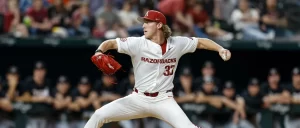
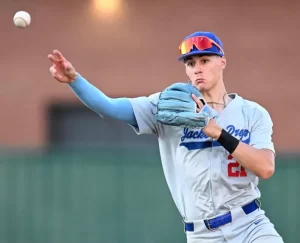
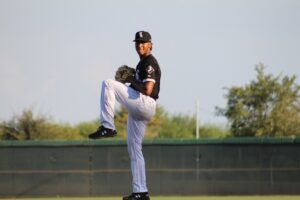
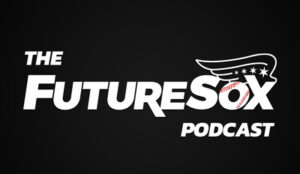
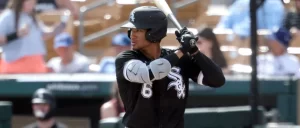
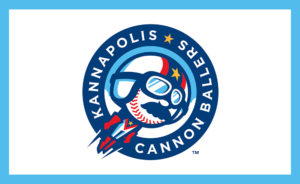
Would really like to see Kelley, Thompson, Dalquist get off to decent starts next year and somewhat prove the sox minor leagues can develop prep arms…. Schultz too… before they spend another top pick on a prep arm. Seems like they have done a bit better with guys like Martin and Burke.
Tanner McDougal might be the next best hope of the non-Schultzes.
McDougal with his spin rates and the katz lab is going to be a good test with how the sox can mold upside prep arms…. good call.
He’s probably the guy I’m most interested in seeing in 2023, along with Peyton Palette. I just can’t get hype about Schultz yet because I have serious concerns about his ability to command three offerings as well as his delivery, but I hope that’s just the skeptic in me being stupid.
The White Sox are very happy with Matthew Thompson’s progression. He should be starting in Double-A and we’ll see how it goes.
The Sox are easily impressed or at least easily act impressed. That said, Thompson did progress year to year so there is progress for what its worth. I guess we’ll see if he makes the next step.
Game 3 starter this October…
I don’t see any reason to be happy, but I also haven’t been outright disappointed. I think Thompson has made reasonable progress as a second round prep pick and is still on track to debut before he’s 25. Look no further than Jared Kelley for a much worse case scenario.
How I’d draft them based on names:
That’s an indie pro wrestling heel stable (1-3) and their manager (4).
always happy with a pitcher with plus stuff.
is eric bitonti a ‘just-missed’ guy or are you low on him?
Small guy but had a big summer it seems. He could go top 40 for sure.
Small school guy I meant.
Love you guys for your positivity on this board. If I had my druthers I’d love to see them draft Troy from Stanford. We have a few good young arms in Crochet, Lambert and Martin. So to get a college prospect that they might be able to fast track to 2nd base sounds good. JMO
No. Never draft for major league need. Get the highest ceiling or the surest bet to reach his ceiling. Best player available, regardless of position.
Oh I agree that’s how a normal team operates, but a Reinsdorf team is anything but normal. The window is closing fast if it isn’t already closed.
Desperate times/desperate measures. Once again… I agree with your philosophy.
Well, there’s something to be said for prioritizing players who have a position over those who don’t. Vaughn was arguably a better collegiate hitter than Rutschman, but there was a pretty clear choice between the two based on position.
Was anybody predicting Vaughn to be the first or second pick in 2019?
No one that I recall seeing. Positional value of catcher makes Rutschman’s talents worth more than Vaughn. Some even argued that Rutschman was potentially a better hitter than Vaughn anyway. If I recall correctly, Vaughn was in the second tier of guys with Witt and Abrams but most mocks assumed Witt was going second.
It was pretty much always Rutschman and Witt or Witt and Rutschman. Would we not have drafted Witt because we had TA at SS? Of course not, best player available.
I remember mocks were split between Vaughn and prep product C.J. Abrams at #3. Speculation of Vaughn going in the top 2 was mostly tied to speculation he was willing to take a below-slot bonus for the small market teams picking ahead of the White Sox.
Knowing now that Vaughn wouldn’t be a positive contributor on contending White Sox teams in 2021-22, I’d say Abrams may have been the better pick. But the organization’s view of “untradeable” Vaughn at least shows some faith in the pick. The Padres clearly didn’t feel the same way about Abrams, whom they already gave up on and only got Juan Soto in return.
I am interested to see what impact a position switch has on Vaughn’s hitting. It had to be mentally taxing trying to adjust a position that he knew he wasn’t suited to play. Maybe then we will see what made him so darn untradeable.
Nobody who knew the Sox at all was picking CJ Abrams. It was Vaughn all the way once it became clear they couldn’t “out tank” the Royals. Anything other than Rutschman and Witt for the top 2 was noise or fuff to get clicks.
There was a lot of noise about how Riley Greene was DH only material and such n such. Now he’s playing a good CF in the majors and the bat is looking as expected, where was that noise coming from? Detroit maybe?
Good stuff, James. I’ll never understand how you guys can be that attuned to the draft market; it’s just beyond my capacity to reckon with. What’s your opinion on drafting prep pitchers in the first round? Seems like even the best-case scenarios result in a 5+ year development window in which you’re lucky if their arm holds up (assuming they’re even any good), at which point it’s either use them or lose them to the Rule 5. Am I wrong to think it’s an incredibly risky endeavor given the upside seems to rarely be attained?
Yeah it’s risky. I’m not a huge fan of it but I was fine with what they did last year. I’d rather they gamble on an 18-year-old with TOR upside at #26 than go with a college arm that projects as a #3 or #4, especially when you can insulate the class with guys like Pallette and Cannon behind it. You aren’t wrong though. In general, I’d always prefer to take position players because pitchers break but you have to have enough pitching and getting it via other means is expensive. It’s a tough call.
I actually liked Pallette better than Schultz as a more proven commodity with good upside of his own. Schultz has a lot of potential but there’s so much in his profile that worries me. Maybe I’m just naturally pessimistic after following the White Sox farm system for the last decade.
The other option, as the Sox have demonstrated, is to pick a pitcher who has top-tier talent but risk based on mechanics – Chris Sale’s results should’ve had him picked higher, but (IIRC) scouts feared that his arm wouldn’t hold up. Lucky for the Sox (both White and Red), his arm was sufficiently solid to deliver many years of ace-level results. That aligns with picking Schultz in the late first round – might as well go boom-or-bust.
Same thing with Rodon and his horrible mechanics and guess what, he didn’t hold up.
While he didn’t hold up, he was the obvious pick at #3 that year. His performance in college was fantastic and scouts loved the slider (in particular).
Heck, he was supposed to go #1 overall, and given what happened to the two guys ahead of him, he probably should have.
It’s crazy to think that there were three pitchers taken with those top three picks and Rodon (even before his breakout 2021) was the most successful.
HS pitchers, I believe we have a shiny new one too now.
Actually it was starting to setup like a big fall for him draft day after reports of a fairly significant drop in his FB but since Hahn doesn’t go beyond his BA subscription for scouting he didn’t fall past the Sox. The tragedy though was the rush up to the majors without cleaning up his mechanics or developing the 3rd pitch. We had to wait until the TJ surgery for that.
The weirdest part was the significant overpay for him, it wasn’t as bad as the what were they thinking Joe Borchard overpay but he had no where go so why?
Yeah, in hindsight it is kinda weird how they went to the max bonus possible for Rodon like they did, but given his agent, I guess it’s not surprising. What’s funny is that if Rodon had been taken at #1 or #2, the White Sox were reportedly going to go after Aaron Nola because they didn’t want to take the risk on a high school pitcher with a top-3 pick, so at least there’s that.
I really hope the Sox development and scouting teams are working hand in hand. It sucks not trusting if this team to keep the prospect pool deep while staying competitive. Can’t put my finger on it, just feels like there is a disconnect between the farm system, development and pro team most of the time. I’m hoping that improves with Grifol. Love the early draft coverage.
The team made a big demonstration about their various levels all being on the same page a few years ago, but then they hired TLR, four years of prospects flopped almost entirely, and it just seemed like chaos last season.